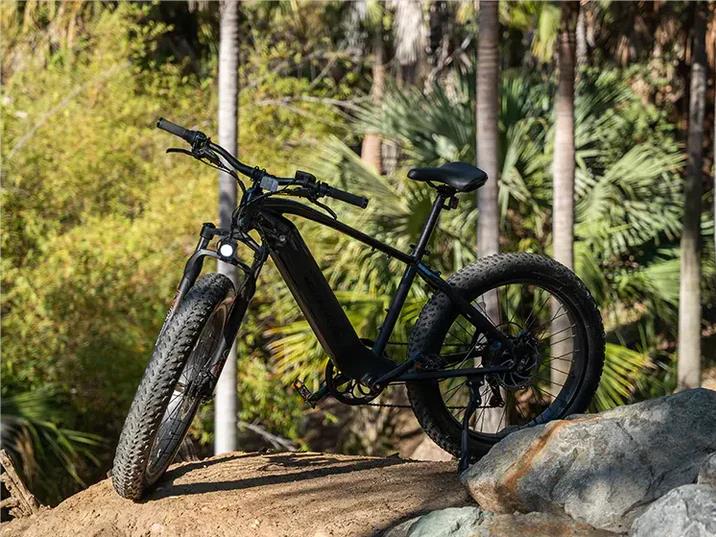Components of an electric bicycle consists of some key e bike parts (battery, controller, motor) and many subsidiary parts (display, throttle, PAS sensor). This article aims to explain what each component does to someone new to e-bikes.
Battery
Batteries are the energy source that powers e-bikes and are usually the most expensive part of an e-bike system. In the early days of e-bikes, most batteries were lead-acid, nickel-cadmium, or nickel-metal hydride, but modern e-bike batteries are almost exclusively lithium-ion. As lithium battery technology matures, it becomes lighter, more powerful, more reliable, and has an increasingly longer cycle life. Modern Lithium batteries made with top-of-the-line batteries are now 8-10 times lighter than lead batteries of yesteryear, and they can be expected to last 5-6+ years of normal use if not misused.
Battery
Lithium battery packs consist of many smaller lithium cells connected together to form battery modules. While lithium batteries come in many shapes and sizes, every responsible player in the industry has focused on small cylindrical (18650 and slightly larger 21700) cells made by well-known companies such as Panasonic, Sony, Samsung, and LG. These batteries have a much better safety and reliability record than generic batteries or other lithium types such as lithium polymer. In addition to the battery, lithium batteries require a battery management system, or BMS circuit, which senses the voltage on each cell and activates a cutoff to prevent them from overcharging or overdischarging.
The number of cells in a battery and how they are connected together in series and parallel determines the voltage and capacity (ampere hours or Ah) of the final battery pack. Most e-bike batteries run on 36 volts or 48V, but you’ll also see e-bike battery packs as low as 24V or as high as 72V. Lower voltage systems draw higher currents from the battery pack, which may require thicker wires and connectors, while higher voltage systems can reach levels that are dangerous for electrocution. 36-52V is usually the best choice in the trade-off, no shock at all, and low enough amperage for cheap, thin wire and connectors. This is why most e-bikes use this voltage range.
The size or capacity of a battery can be expressed in Amp-hours (Ah) or Watt-hours (Wh), where Watt-hours are simply Amp-hours times voltage. The watt-hours of the battery determine the total energy stored in the battery pack and thus the range of the battery pack. Most e-bike batteries range from 300 to about 800 watt-hours.
It’s worth noting that a battery with a higher voltage will have fewer amp-hours than a battery with a lower voltage for the same size. For example, a 36V 20Ah battery pack (720 Wh) is the same in terms of energy storage as a 48V 15Ah battery (also 720 Wh). Expect the two battery packs to weigh the same, cost the same, and provide the same range and power capabilities when paired with a suitable motor.
Factory e-bikes often have the battery pack integrated into the bike’s frame tubes for a very clean look. This looks great until the time comes when the battery needs to be replaced, the bike model has long since been discontinued and no one is making this particular shaped battery pack. Conversion kit batteries are usually designed to fit on the downtube inside the triangle, or on the rear bracket. Since they are not integrated into the bike, they can be easily replaced and upgraded.
Down Tube & Rack Battery
motor
The electric motor converts the electrical energy from the battery into mechanical energy to drive the bike. Motors can be located in many places on a bike, but at Grin we only focus on hub motors for reasons explained here. In hub motors, the electric motor is located inside the front or rear bike hub, allowing for a fairly simple conversion where you can replace a normal bike wheel with an electric wheel. Almost all e-bike motors today are permanent magnet brushless DC (BLDC) motors, which have 3-phase wires to power the motor. In addition to these 3 phase wires that power the hub, they usually have 5 hall sensor wires that allow the electronics to determine the motor position for smooth rotation at low speeds. These wires can be separated into separate connectors, or integrated into a single plug, combining power and signal wires into one.




